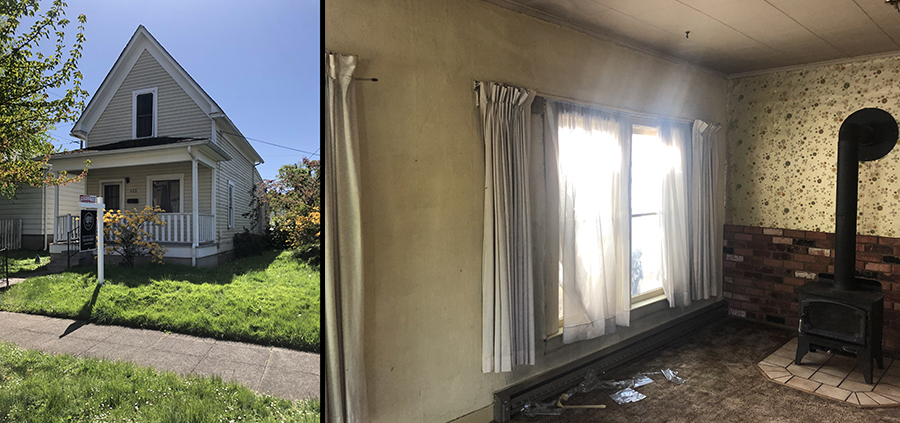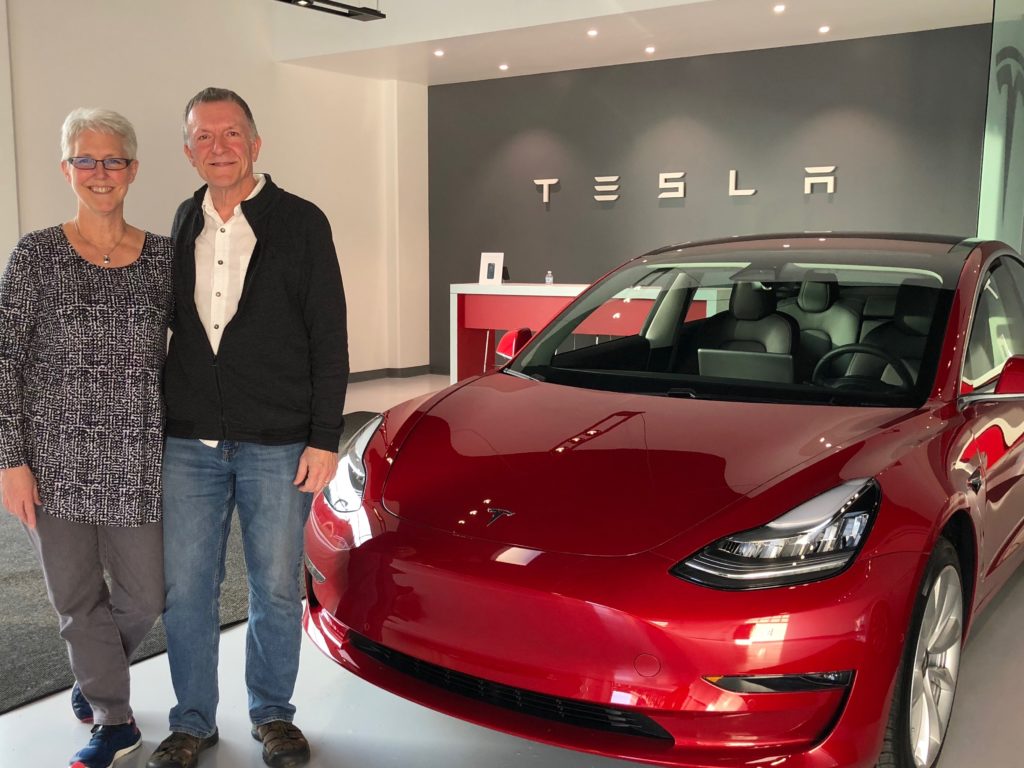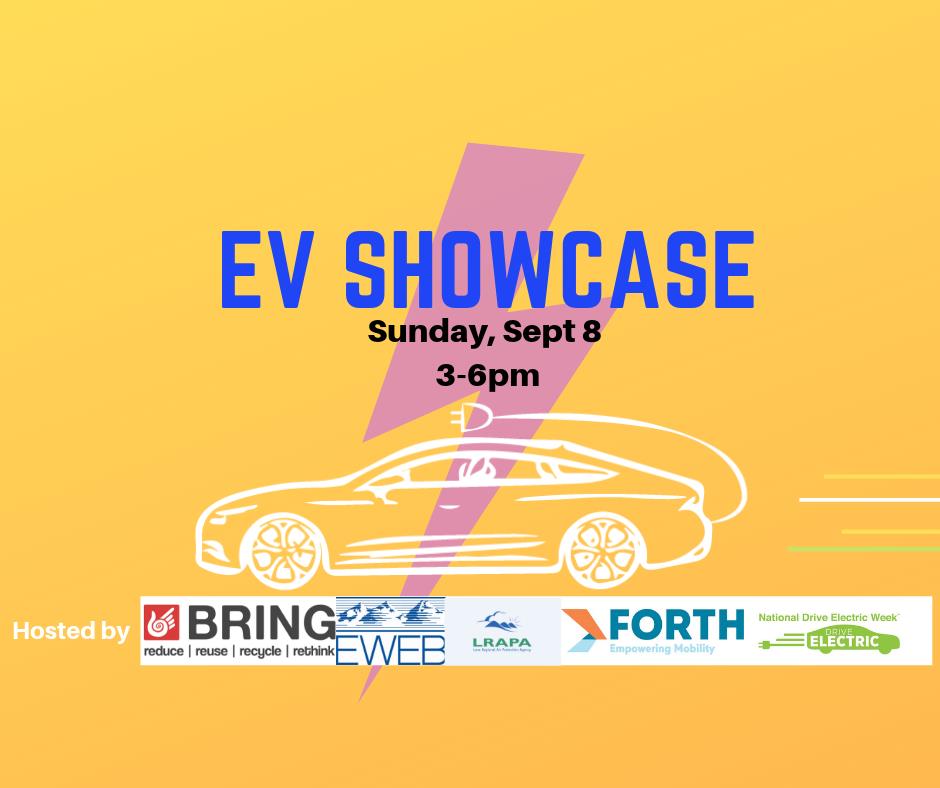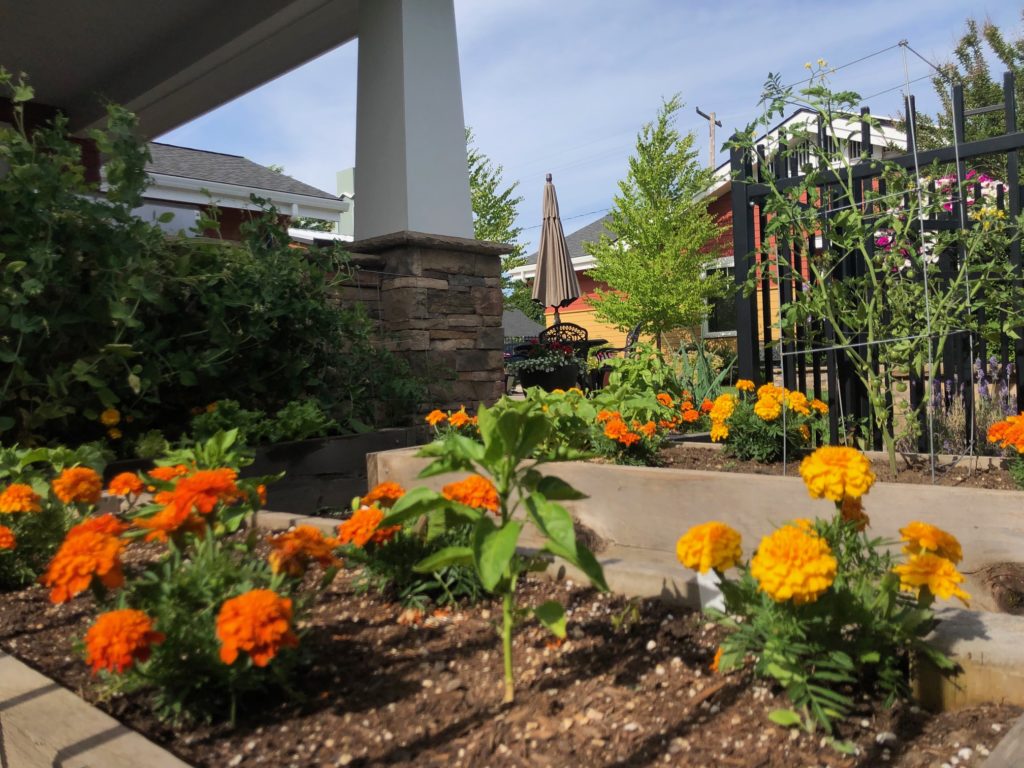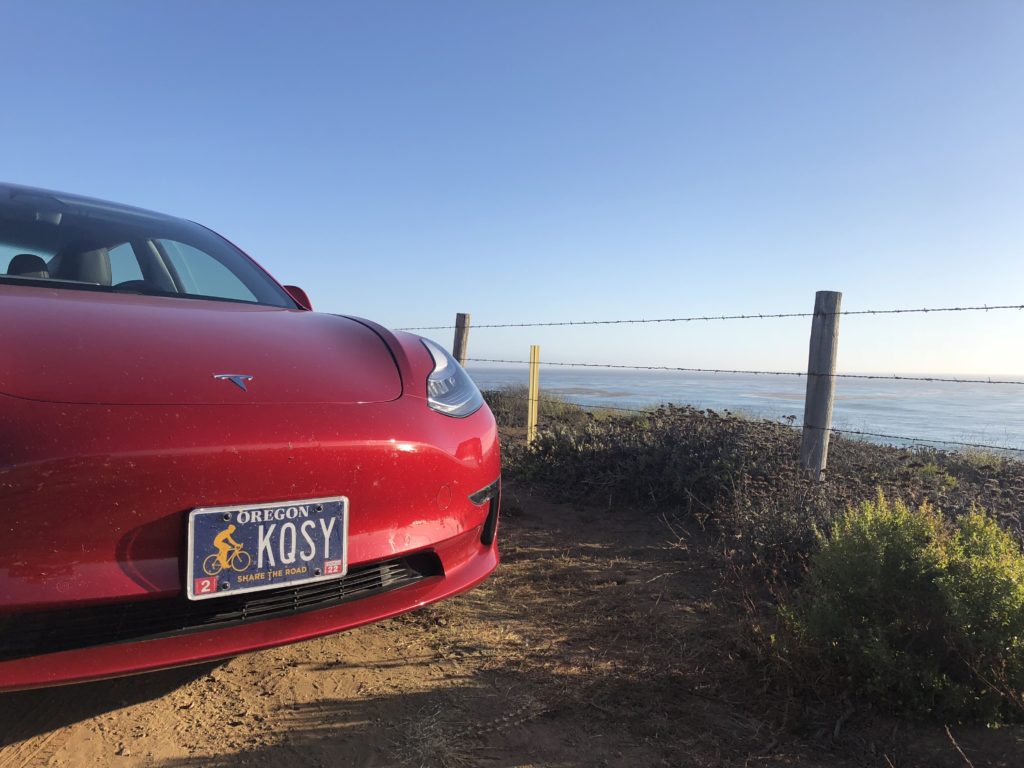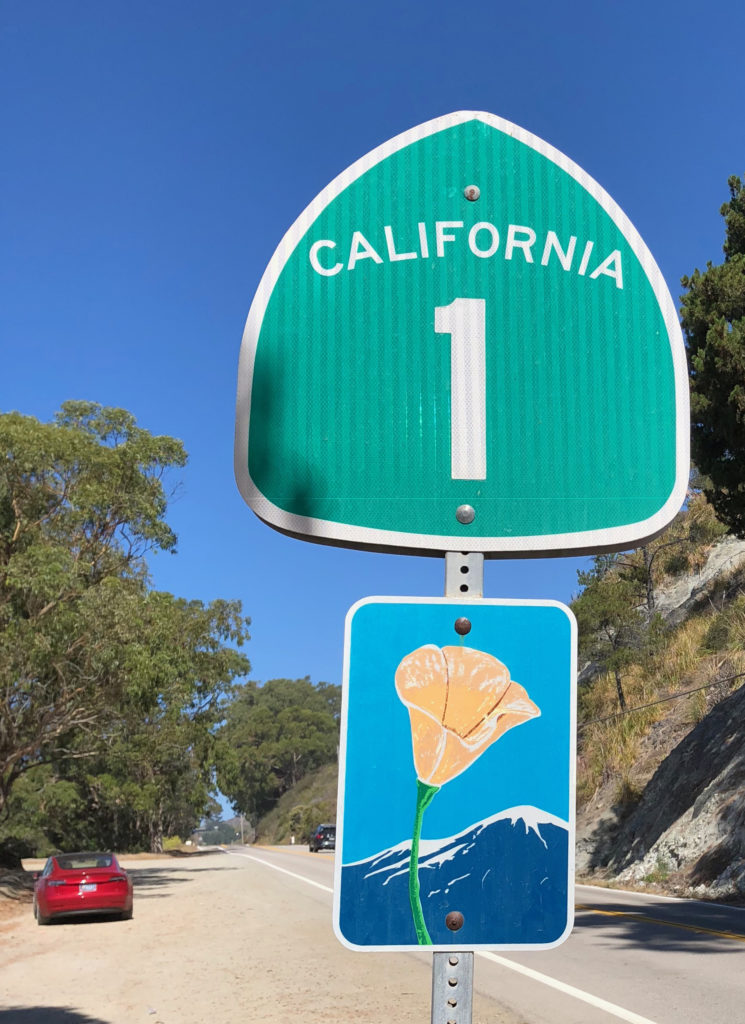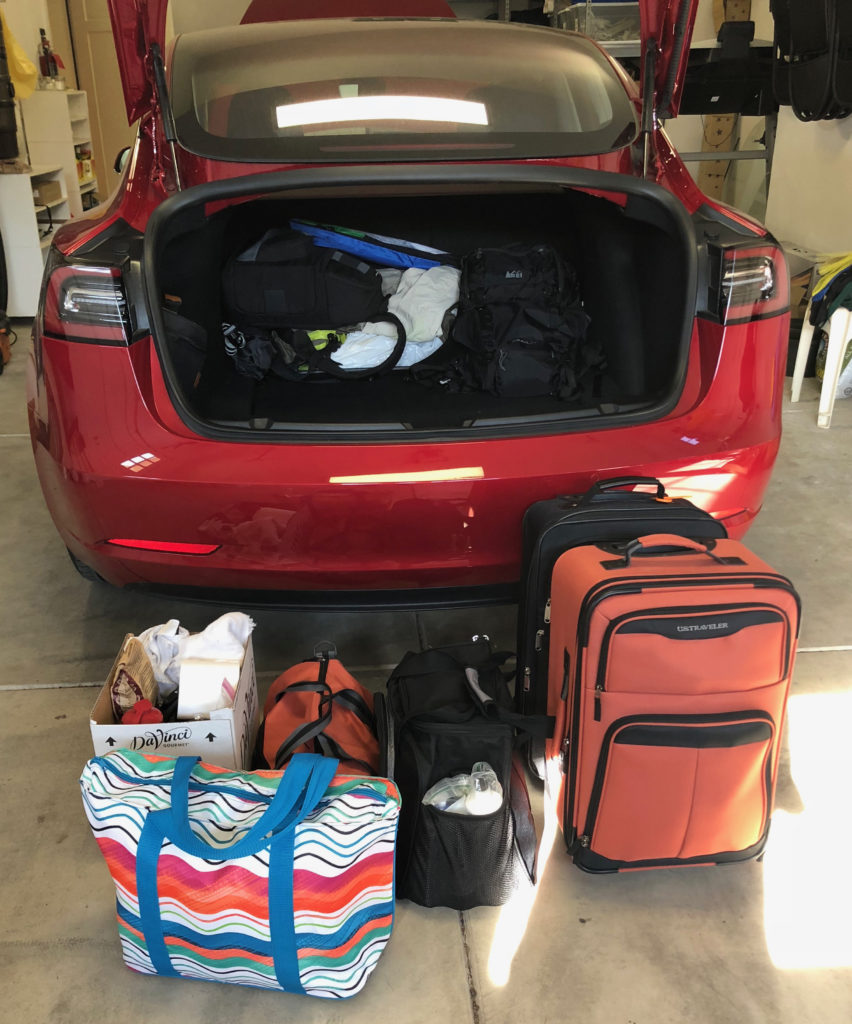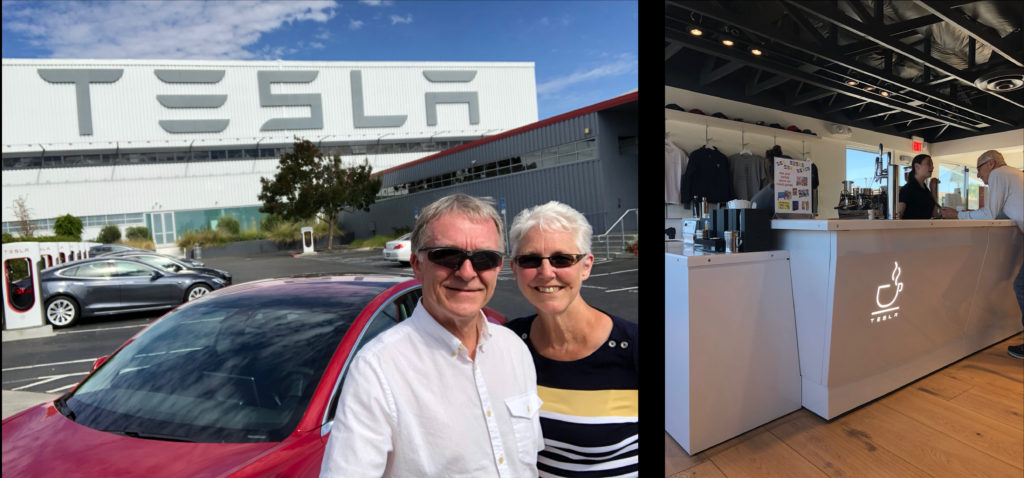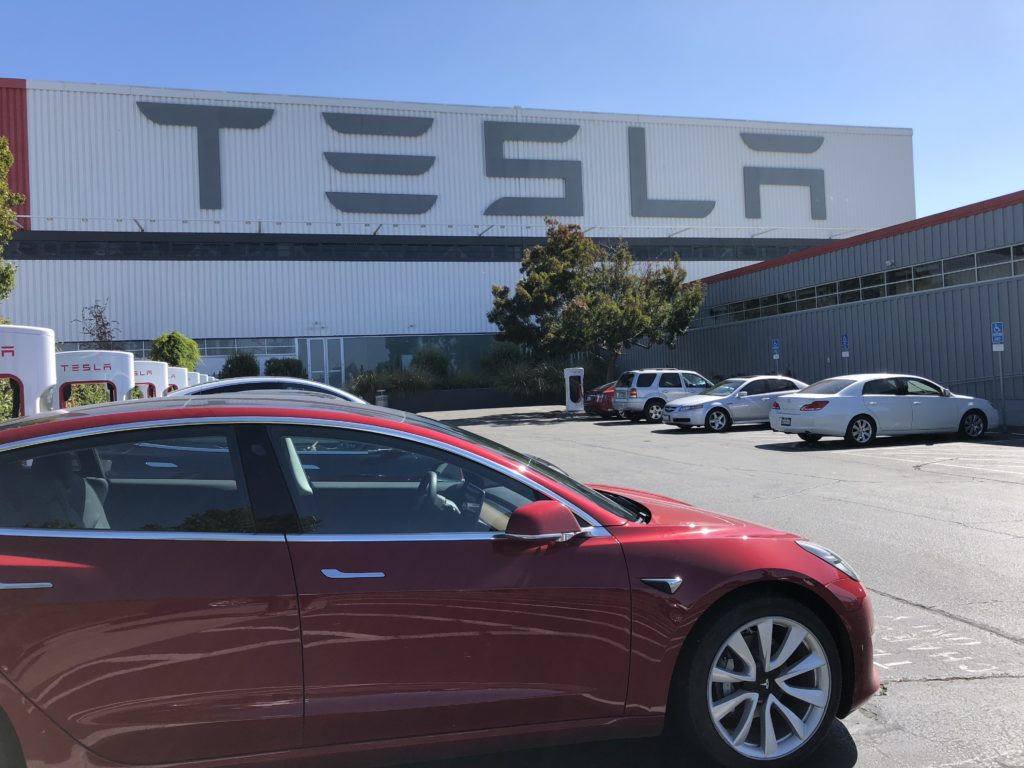
On February 10, 2018, we took delivery of Scarlett, our 2018 Tesla Model 3. After waiting 681 days (not that we were counting), we drove to Portland to take delivery of a car we had never seen, sat in or driven. (The picture above is her birthplace in Fremont, CA). We found out we were only the second Model 3 to be delivered to anyone living in Eugene. Scarlett was one of the first 6,000 Model 3s manufactured.
In the world.
So what has this last year been like? After all, that’s a pretty big risk, buying a car sight unseen, never having even seen one “live”. There are now a lot of “one year reviews” being posted by those fortunate enough to get an early Model 3. Well, I thought I’d share our experiences over this last year and just how we feel about the car.
There are enough thoughts and feelings that I’m spreading this into two posts. Part Two will come tomorrow on her actual “birthday.”
HISTORY
Our previous cars were Volkswagens. We owned a 2001 Passat and a 2003 Beetle. We sold the Beetle when we moved downtown because we found our location allowed us to only need one car. And, we had committed to our next car being all-electric (EV). The Passat was well past 100,000 miles and we were hoping it would last until we could buy an EV. Volkswagen let us know in no uncertain terms around 2008 that “we have no intention to ever make an EV.” I wish I had saved that email.
The Think City came out in 2010 and very quickly disappeared. 100 miles of range, $42,000 cost and manufactured in Indiana. Bankrupt by 2011.
The Leaf also came out in 2010 and we were not impressed. We didn’t like the styling and the range at about 73 miles was lacking. Then the Tesla introduced the Model S in 2012 with about 250 miles of range. A lot better. Beautiful car. But it was $60,000, which was the equivalent of about $65,000 in today’s dollars. Even with one car, that was still too much.
Then in 2016, Tesla announced the Model 3. It was two years out, would have 220 miles of range and have a base price of $35,000. Within days, they had a waiting list of 450,000 people who plunked down $1,000 to hold a spot in line.
We loved the idea, but had no idea how many years it would take if we took spot 450,001 in line.
So we waited. But we would soon find out some good friends of ours got in on the first day of reservations and were early in the line. They didn’t want to wait two years, so they bought a Model S. Which actually moved them up in line a bit.
Then they called us and asked if we wanted to assume their reservation. We talked (briefly) and said “yes.”
So the 681 day wait began and we were able to configure and order Scarlett on January 27, 2018. She wasn’t $35,000, but she had a much larger battery (310 miles) and we are glad we upgraded the range. We were able to take delivery on February 10, 2018.
So here are our impressions.
FUEL COSTS
I’ve blogged about this a bit recently, but now with the full year, it’s official.
We’re saving a good chunk of change driving an EV.
We categorize all of our spending in Quicken, so it was easy to know how much we spent on gasoline. Even as we got down to one car and living in a walkable neighborhood, we were spending on average $62.50 per month on gasoline. Add to that the almost $1,000 per year on service and it started getting expensive. In fairness, comparing a 17 year old car to a new car, the service costs will be a lot lower at the front end anyway. However, we don’t even have regular oil changes or tune-ups, so our front end service costs are zero.
Calculating the fuel costs charging at home with a solar system (another variable that makes it harder to calculate and also skews the numbers a bit, too), is difficult to calculate. We don’t have any separate metering on the 240v dryer plug we installed to charge at home.
But I had been tracking our electric bills and solar as best I could for the few years we’d been in the house. And I overlaid the year with Scarlett compared to previous years. In the months where we used more electricity than we produced (winter), I calculated the difference at full retail ($0.088/KWh). Then in the months where we produced more than we used (summer), I calculated the difference at the amount we sell our surplus back to our utility ($0.026/KWh).
All that resulted in an increase in our electric bill after purchasing the car of $7.70/month. So even ignoring service costs, we’re saving $55/month on fuel.
CHARGING (aka FILL ‘ER UP!)
Probably the single most common question we are asked is “what if you run out of charge?”
Sometimes I get a little snarky and respond with “what if you run out of gas?” Because it’s pretty much the same thing. If you run out of charge or run out of gas, you haven’t planned well.
Charging an EV requires a different mindset. And that took a little getting used to.
Usually, you would go to a gas station about once a week telling the attendant “fill ‘er up” and spending 10 minutes topping off the tank. On a vacation, it would be the same.
With an EV, it’s a little different.
For the day-to-day “fueling” we either plug in during the day on the weekend when we’re out walking and the sun is shining, to take advantage of our virtually free solar electricity, or, during the winter, we plug in at night and we are fully charged by morning. The day-to-day charging takes us realistically about 20 seconds (10 to plug in and 10 to unplug and wrap the cord).
On trips, we found we could time our charging usually at one of the Superchargers, which are located almost everywhere (12,000 world-wide; they don’t say how many are in the US alone). We then would Yelp a nearby restaurant or coffee shop and time our charging with a lunch, dinner or coffee stop. When finished with our food or drink, we would walk back to the car, unplug and be on our way.
Many times we were charged to “full” but sometimes not. But with the frequency of Superchargers and the inherent need to stop and rest or eat or get coffee, we shifted our “fill ‘er up” mentality to charging to wherever it was and going on our way. So again, very little extra time; certainly no more than filling up with gas, then driving to a lunch spot.
(tomorrow: more of the emotional experiences)
